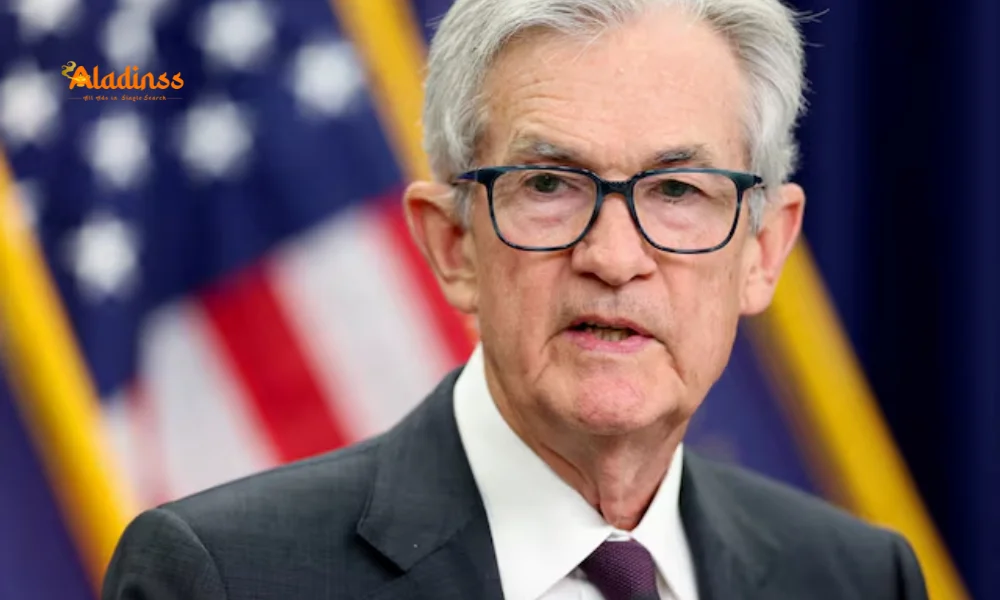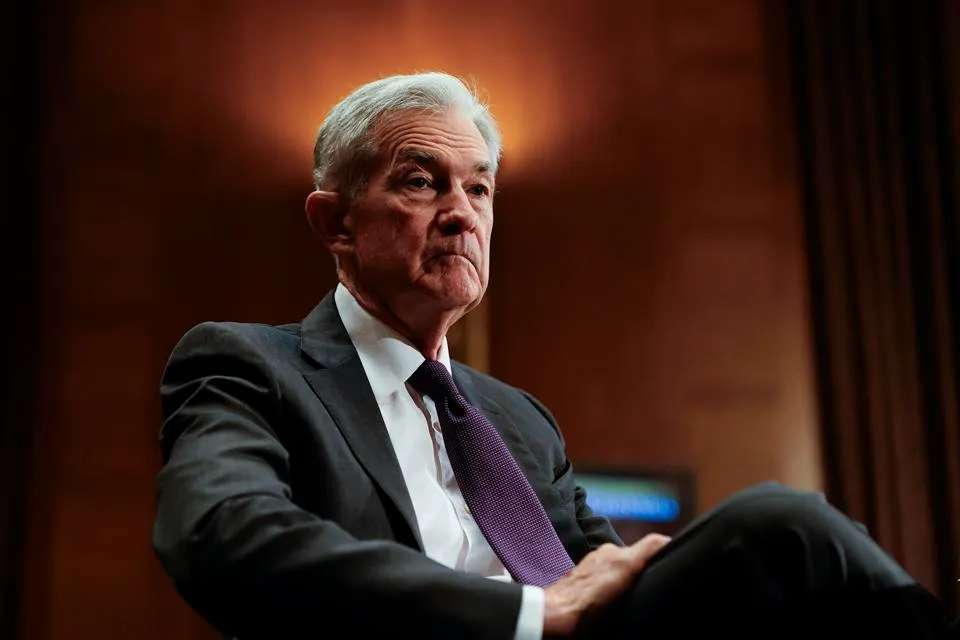Fed Opens September Meeting with Independence Under Threat: Trump Influence and Rate Cut Expectations

Fed Opens September Meeting with Independence Under Threat: Trump Influence and Rate Cut Expectations
The U.S. Federal Reserve's two-day policy meeting, commencing on September 16, 2025, is under intense scrutiny as President Donald Trump's administration exerts unprecedented influence on monetary policy decisions. This breaking news update from Rae Wee at Reuters highlights the Senate's confirmation of Stephen Miran, Trump's top economic adviser, to the Fed's Board of Governors, granting him a pivotal vote on interest rates. With markets anticipating a 25 basis-point rate cut and a slight chance of a 50 basis-point move, the outcome could ripple across global markets. Google trends show surging interest in "Fed rate cut September 2025" and hashtags like #FedMeeting and #TrumpFed trending on social media, reflecting investor focus on this critical event. Alongside, UK labor market data and U.S. retail sales figures add to the day's economic significance.

Fed's September Meeting Amid Political Pressure
The Federal Reserve's September 2025 meeting unfolds against a backdrop of significant political pressure, with President Trump's influence reshaping the central bank's dynamics. The Senate's narrow confirmation of Stephen Miran to the Board of Governors positions him to influence monetary policy, as he joins the rate-setting committee pending final paperwork. This development marks a pivotal moment, raising concerns about the Fed's independence, a principle enshrined since 1913 to ensure policy decisions remain data-driven and free from political interference.
Additionally, Fed Governor Lisa Cook's position was upheld by a U.S. appeals court, rejecting Trump's attempt to remove her, unless a last-minute Supreme Court ruling intervenes. These events, while not immediately shaking markets, underscore Trump's efforts to align the Fed with his economic agenda, including public calls for a substantial rate cut. Historically, central bank autonomy has been crucial for maintaining economic stability, and any perceived erosion could impact global confidence in U.S. monetary policy. The meeting's outcome, expected on Wednesday, will be closely watched for signs of how Chair Jerome Powell navigates these pressures.

Market Reactions and Rate Cut Pricing
Global markets adopted a cautious stance as the Fed meeting began, with Asian equities hitting record highs while the U.S. dollar struggled to gain traction. According to the CME FedWatch Tool, markets have fully priced in a 25 basis-point rate cut, with a 20-30% probability of a 50 basis-point reduction. This pricing reflects recent U.S. economic data, including inflation cooling to 2.5% in August and unemployment steady at 4.2%, suggesting a balanced economy with manageable slowdown risks. Trump's advocacy for a larger cut aims to stimulate consumer spending and equity markets, but analysts caution that aggressive easing could reignite inflationary pressures.
In Europe, indices like the FTSE 100 and DAX recorded modest gains, while U.S. futures pointed to a neutral opening. The dollar index lingered near 100, pressured by expectations of looser policy. The 10-year Treasury yield at 3.8% anticipates further declines if cuts materialize, potentially easing borrowing costs for businesses and consumers. The Fed's decision will influence not only U.S. markets but also global peers like the ECB, impacting currency pairs like EUR/USD and capital flows to emerging economies. Investors are bracing for volatility, with options activity indicating hedging against surprises.
Also Read: Taurian MPS Shares List with 22.8% Premium at ₹210 on NSE SME: Upper Circuit Hit with 5% Gain
UK Labour Market Data and Economic Indicators
On September 16, 2025, UK labor market data for July will draw significant attention, particularly due to persistent wage growth concerns. Economists forecast average weekly earnings (excluding bonuses) to grow at 4.8% for the May-July period, slightly down from 5.0% in April-June, with the unemployment rate expected to remain at 4.7%. For the Bank of England (BoE), elevated wages drive services inflation, complicating the path to rate cuts. The BoE is likely to maintain its 5% benchmark rate this week, with a Reuters poll predicting cuts in Q4 2025 and early 2026, contingent on further data.
Signs of a cooling labor market, such as increased vacancies or minor job losses, could support BoE easing, but persistent wage pressures might necessitate a hawkish stance. This data influences GBP/USD dynamics, impacting UK exporters and import costs. European economies face similar wage challenges, aligning BoE and ECB considerations. Investors will parse the data for clues on inflation trajectories, with implications for gilts and sterling volatility in the context of the Fed's simultaneous deliberations.
U.S. Retail Sales Figures and Consumer Spending Trends
U.S. retail sales data for August 2025, released on September 16, will offer critical insights into consumer behavior amid elevated interest rates. Forecasts suggest a 0.2% month-over-month increase, following a robust 1% gain in July, driven by seasonal factors like back-to-school shopping and travel. Core retail sales, excluding volatile autos and gas, are projected to rise by 0.3%, reflecting steady demand. This data is a key input for the Fed, as strong consumer spending could argue for a cautious 25 bp cut, while weakness might justify a bolder move to bolster economic growth.
U.S. consumers have maintained resilience, with savings rates at 3.5% and rising credit card debt signaling confidence but also potential strain. Preliminary reports from retailers like Walmart indicate moderation, influenced by inflation near the Fed's 2% target. A stronger-than-expected retail report could bolster the dollar and Treasury yields, while underperformance might amplify cut expectations. Given that U.S. consumption drives 20% of global demand, this data will influence European and Asian export markets, making it a pivotal release for cross-border investors.
Implications for Global Markets and Central Banks
The convergence of the Fed's meeting with UK and U.S. economic data creates a high-stakes environment for global markets. A 25 bp cut could stabilize equities, potentially pushing the S&P 500 toward 5,800, while a 50 bp move might trigger a risk-on rally but raise concerns about inflation. Trump's influence on the Fed introduces uncertainty, particularly for emerging markets reliant on predictable U.S. policy signals. European equities, sensitive to dollar fluctuations, may gain if the dollar weakens post-cut, benefiting exporters.
Globally, central banks like the ECB and PBOC are monitoring for synchronized easing cycles. The BoE's likely rate hold, driven by wage data, could strengthen GBP, while retail sales will affirm or challenge U.S. soft landing narratives. Investors are hedging via options and futures, with VIX at 15 signaling mild caution. The interplay of these events will shape Q4 market trajectories, influencing portfolio strategies across asset classes.
Trump's Impact on Fed Independence and Policy
Trump's efforts to shape the Fed, through appointments like Miran and attempts to remove Cook, challenge the 1977 Federal Reserve Reform Act's safeguards. Historical instances, such as Nixon's influence on Arthur Burns, highlight risks of inflation from political interference. Miran's pro-growth perspective may push for larger cuts, aligning with Trump's economic priorities, potentially skewing future votes. Markets are pricing in this risk, with increased volatility in futures contracts.
Jerome Powell's post-meeting press conference will be critical, as his forward guidance on rate paths could either reassure markets or heighten concerns about autonomy. A loss of Fed independence could undermine confidence in U.S. assets, impacting global bond and equity markets. Investors are advised to monitor rhetoric for signs of policy bias, which could elevate long-term uncertainty.
Broader Economic Context and Investor Strategies
The U.S. economy, growing at 2.5% annualized, balances near-target 2.5% inflation, while the UK's post-Brexit landscape grapples with 2.2% CPI driven by wages. Investors should consider defensive sectors like utilities if the Fed signals caution, while tech and consumer stocks could rally on aggressive cuts. Hedging with gold or bonds mitigates policy uncertainty, particularly amid Trump's influence.
Rae Wee's analysis underscores September 16 as a pivotal day, with Fed decisions, UK wages, and U.S. retail data shaping global outlooks. Real-time monitoring via platforms like X ensures investors stay ahead, adapting to policy shifts and economic signals in a dynamic market environment.
Comment / Reply From
No comments yet. Be the first to comment!







